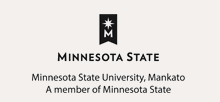Effects of Fiber Percentage and Orientation on Fixtures Manufactured by Nylon-Carbon Fiber 3D Printing
Location
CSU Ballroom
Start Date
10-4-2018 10:00 AM
End Date
10-4-2018 11:30 AM
Student's Major
Automotive and Manufacturing Engineering Technology
Student's College
Science, Engineering and Technology
Mentor's Name
Kuldeep Agarwal
Mentor's Department
Automotive and Manufacturing Engineering Technology
Mentor's College
Science, Engineering and Technology
Description
Currently, machinists and part manufacturers are using metallic and plastic fixtures to secure their parts during machining, assembly and other manufacturing processes. These fixtures are also used on robots and other automated equipment for part gripping and movement. It is estimated that the work holding and fixture industry generates about $2 billion revenues annually. Most of the fixtures and devices are made either of metals or of plastics. The primary manufacturing process used for these is machining. This process is very time consuming and wastes a lot of material. 3D printing is a new manufacturing process that can reduce the cost and time required for fixtures and work holding devices. The plastic fixtures are easy to replace with 3D printing, but the metal fixtures need high strength characteristics that are not easy to replicate in 3D printing. A new 3D printing process called Composite Freeform Fabrication (CFF) has the potential to create parts with high strength similar to aluminum by using a matrix of Nylon with fibers such as Carbon fiber. The process has been demonstrated for a limited use for the manufacturing of fixtures. However, there needs to be more investigation into the process so that guidelines can be set which would help designers and engineers manufacture fixtures from this technology. This project studies the properties of carbon fiber 3D printed parts and its application to manufacturing fixtures. In this project mechanical test specimen were created using the CFF process by varying volume percent of fiber and their orientation. The properties were then compared based on the processing parameters.
Effects of Fiber Percentage and Orientation on Fixtures Manufactured by Nylon-Carbon Fiber 3D Printing
CSU Ballroom
Currently, machinists and part manufacturers are using metallic and plastic fixtures to secure their parts during machining, assembly and other manufacturing processes. These fixtures are also used on robots and other automated equipment for part gripping and movement. It is estimated that the work holding and fixture industry generates about $2 billion revenues annually. Most of the fixtures and devices are made either of metals or of plastics. The primary manufacturing process used for these is machining. This process is very time consuming and wastes a lot of material. 3D printing is a new manufacturing process that can reduce the cost and time required for fixtures and work holding devices. The plastic fixtures are easy to replace with 3D printing, but the metal fixtures need high strength characteristics that are not easy to replicate in 3D printing. A new 3D printing process called Composite Freeform Fabrication (CFF) has the potential to create parts with high strength similar to aluminum by using a matrix of Nylon with fibers such as Carbon fiber. The process has been demonstrated for a limited use for the manufacturing of fixtures. However, there needs to be more investigation into the process so that guidelines can be set which would help designers and engineers manufacture fixtures from this technology. This project studies the properties of carbon fiber 3D printed parts and its application to manufacturing fixtures. In this project mechanical test specimen were created using the CFF process by varying volume percent of fiber and their orientation. The properties were then compared based on the processing parameters.
Recommended Citation
Jones, Jacob and Travis Goss. "Effects of Fiber Percentage and Orientation on Fixtures Manufactured by Nylon-Carbon Fiber 3D Printing." Undergraduate Research Symposium, Mankato, MN, April 10, 2018.
https://cornerstone.lib.mnsu.edu/urs/2018/poster-session-A/38



